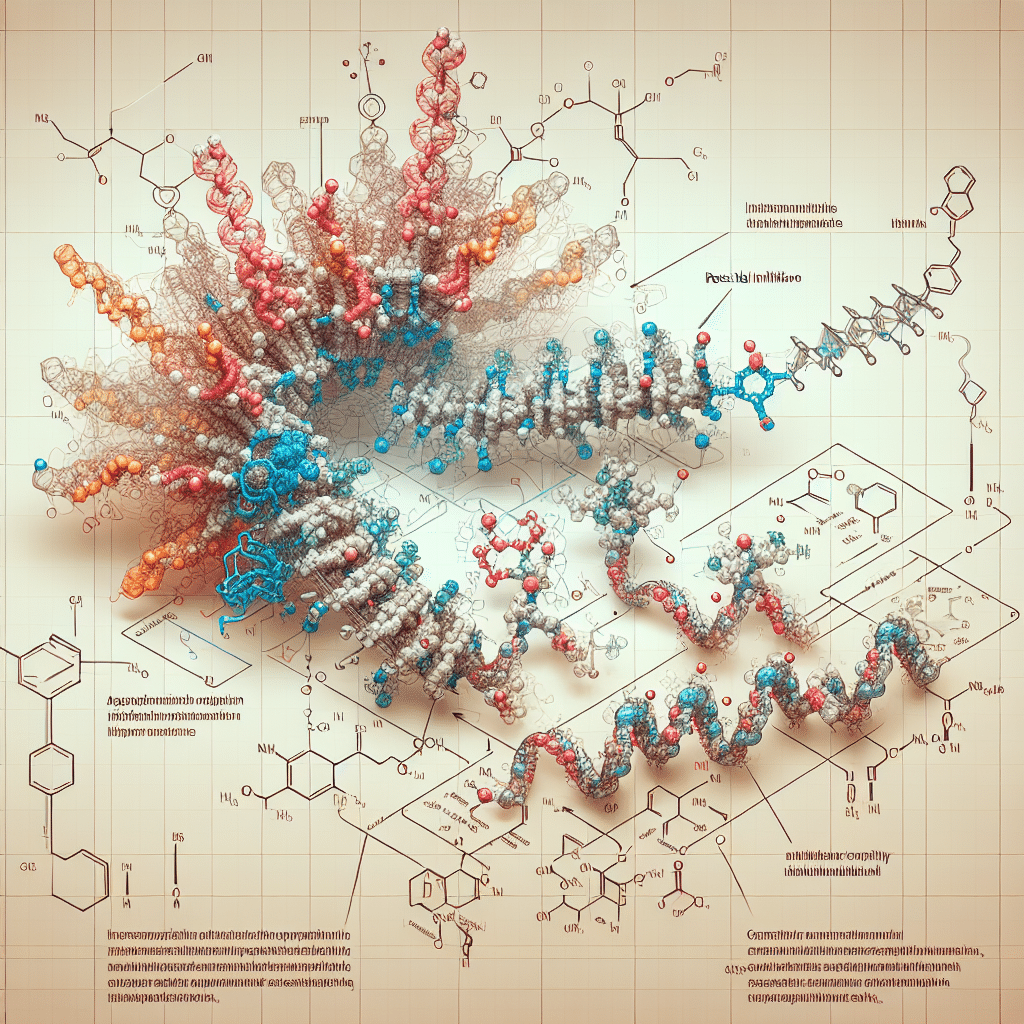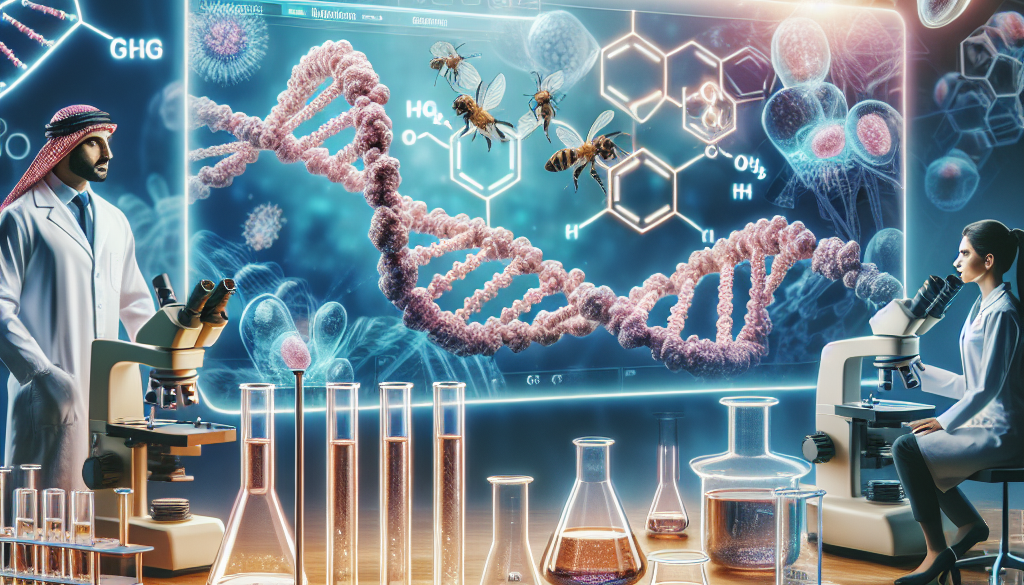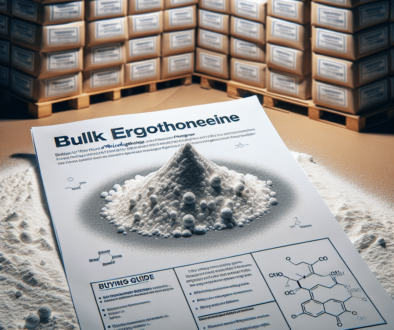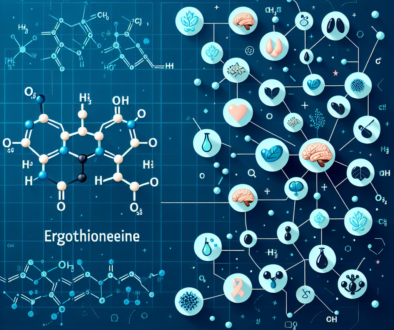Decoding EgtD Inhibition: A Leap Forward in Ergothioneine Synthesis Understanding
-
Table of Contents
- Decoding EgtD Inhibition: Advancing Ergothioneine Synthesis Knowledge
- The Role of EgtD in Ergothioneine Synthesis
- Understanding EgtD Inhibition
- Recent Advances in EgtD Inhibition Research
- Case Studies and Examples of EgtD Inhibition
- Implications for Health and Disease
- Challenges and Future Directions
- Conclusion: The Potential of EgtD Inhibition
- Discover ETprotein’s High-Quality Protein Products
Decoding EgtD Inhibition: Advancing Ergothioneine Synthesis Knowledge

Ergothioneine (ET) is a naturally occurring amino acid and is considered a potent antioxidant with various potential health benefits. It is synthesized by certain bacteria and fungi, including the mycobacterium species responsible for tuberculosis. The enzyme EgtD plays a crucial role in the biosynthesis of ergothioneine, making it a significant target for scientific research. Understanding and inhibiting EgtD could lead to advancements in the production of ergothioneine and its application in medicine and nutrition. This article delves into the importance of EgtD inhibition and its implications for ergothioneine synthesis.
The Role of EgtD in Ergothioneine Synthesis
Ergothioneine synthesis is a complex process that involves several enzymes, with EgtD being one of the key players. EgtD catalyzes the last step in the biosynthesis of ergothioneine, which involves the addition of a sulfur atom to histidine, resulting in the formation of ergothioneine. This sulfur transfer is critical, as it confers ergothioneine with its unique antioxidant properties.
Understanding EgtD Inhibition
Inhibiting EgtD can serve multiple purposes. From a therapeutic perspective, targeting EgtD in pathogenic bacteria could help in developing new antibiotics. On the other hand, understanding how to control EgtD activity could also enhance ergothioneine production in industrial settings, making it more available for its health-promoting properties.
- Therapeutic Potential: By inhibiting EgtD in harmful bacteria, it may be possible to weaken or kill these pathogens by depriving them of ergothioneine, which they require to cope with oxidative stress.
- Industrial Production: Controlling EgtD activity could lead to more efficient biosynthesis of ergothioneine, which is of interest for supplement manufacturers and could have applications in food fortification and pharmaceuticals.
Recent Advances in EgtD Inhibition Research
Recent studies have shed light on the structure and function of EgtD, paving the way for the development of inhibitors. Researchers have been using various techniques such as X-ray crystallography and molecular docking to understand the active site of EgtD and how it can be targeted by potential inhibitors.
- Structural Analysis: Understanding the three-dimensional structure of EgtD is crucial for designing molecules that can bind to and inhibit the enzyme.
- Molecular Docking: This computational method predicts how small molecules, such as potential drugs, interact with a target protein like EgtD.
Case Studies and Examples of EgtD Inhibition
Several studies have reported on compounds that can inhibit EgtD. For instance, researchers have identified peptide-based inhibitors that mimic the substrate of EgtD, effectively blocking its activity. Other studies have focused on small molecule inhibitors that can bind to the active site of EgtD, preventing it from functioning.
- Peptide Inhibitors: These inhibitors are designed to resemble the natural substrates of EgtD, competing with them for binding to the enzyme.
- Small Molecule Inhibitors: These compounds can be designed to fit into the active site of EgtD, blocking its catalytic activity.
Implications for Health and Disease
The inhibition of EgtD has far-reaching implications for both health and disease. While inhibiting EgtD in pathogenic bacteria could lead to new treatments for infections, enhancing ergothioneine production has potential benefits for human health.
- Antibiotic Development: New antibiotics targeting EgtD could help combat antibiotic-resistant bacteria.
- Antioxidant Therapy: Increased availability of ergothioneine could lead to new supplements and therapies aimed at combating oxidative stress-related diseases.
Challenges and Future Directions
Despite the progress in understanding EgtD and its inhibition, challenges remain. One of the main challenges is the development of specific inhibitors that do not affect human cells. Additionally, there is a need for more research to understand the long-term effects of ergothioneine supplementation on human health.
- Selectivity: Inhibitors must be selective for bacterial EgtD without affecting similar enzymes in humans.
- Safety: Long-term studies are needed to ensure that ergothioneine supplementation is safe and beneficial.
Conclusion: The Potential of EgtD Inhibition
In conclusion, decoding EgtD inhibition represents a significant leap forward in our understanding of ergothioneine synthesis. The potential therapeutic and industrial applications of EgtD inhibitors are vast, ranging from new antibiotics to enhanced production of a powerful antioxidant. As research continues to unravel the complexities of EgtD function and inhibition, we can expect to see new developments that could have a profound impact on health and disease.
Discover ETprotein’s High-Quality Protein Products
If you’re interested in the potential health benefits of ergothioneine and other protein products, ETprotein offers a range of high-quality options. Their products are designed to meet the needs of various industries, including nutraceuticals, pharmaceuticals, and food and beverage. With a commitment to non-GMO, allergen-free ingredients, and high purity levels, ETprotein is a trusted source for your protein needs.
About ETprotein:
ETprotein, a reputable protein and L-(+)-Ergothioneine (EGT) Chinese factory manufacturer and supplier, is renowned for producing, stocking, exporting, and delivering the highest quality organic bulk vegan proteins and L-(+)-Ergothioneine. They include Organic rice protein, clear rice protein, pea protein, clear pea protein, watermelon seed protein, pumpkin seed protein, sunflower seed protein, mung bean protein, peanut protein, and L-(+)-Ergothioneine EGT Pharmaceutical grade, L-(+)-Ergothioneine EGT food grade, L-(+)-Ergothioneine EGT cosmetic grade, L-(+)-Ergothioneine EGT reference grade and L-(+)-Ergothioneine EGT standard. Their offerings, characterized by a neutral taste, non-GMO, allergen-free attributes, with L-(+)-Ergothioneine purity over 98%, 99%, cater to a diverse range of industries. They serve nutraceutical, pharmaceutical, cosmeceutical, veterinary, as well as food and beverage finished product distributors, traders, and manufacturers across Europe, USA, Canada, Australia, Thailand, Japan, Korea, Brazil, and Chile, among others.
ETprotein specialization includes exporting and delivering tailor-made protein powder and finished nutritional supplements. Their extensive product range covers sectors like Food and Beverage, Sports Nutrition, Weight Management, Dietary Supplements, Health and Wellness Products, and Infant Formula, ensuring comprehensive solutions to meet all your protein needs.
As a trusted company by leading global food and beverage brands and Fortune 500 companies, ETprotein reinforces China’s reputation in the global arena. For more information or to sample their products, please contact them and email sales(at)ETprotein.com today.














